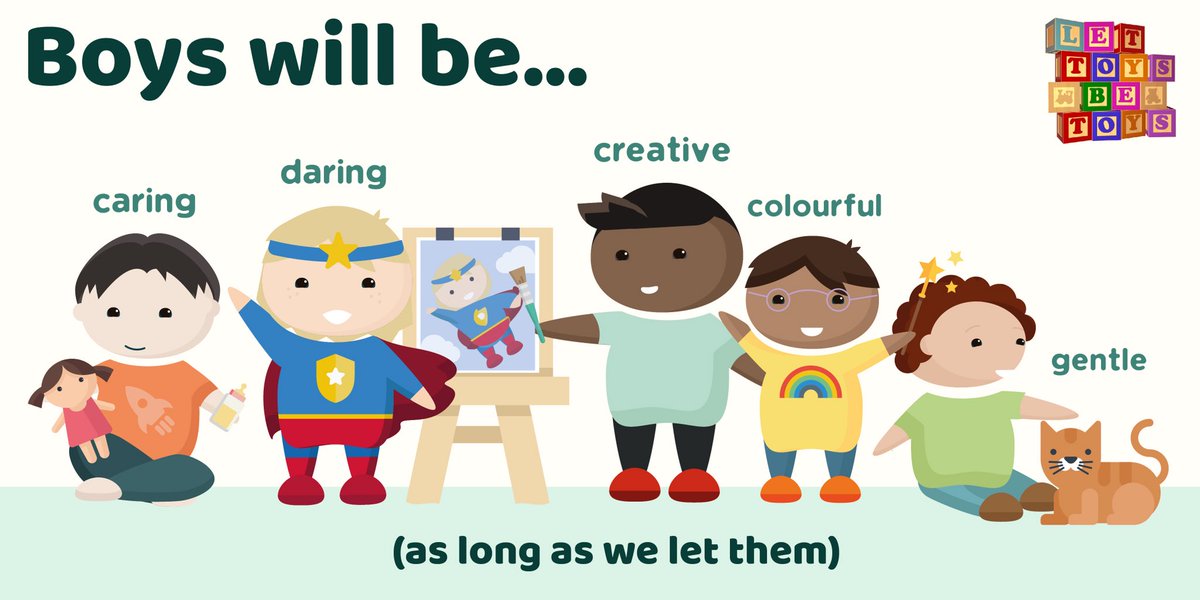More Alike Than Different
Megan Perryman is a teacher in Hackney with a background in managing projects for the public and not-for-profit sectors. She is a co-founder of Let Toys Be Toys, a campaign group that challenges gender stereotypes in childhood. Since the campaign began, fifteen major UK retailers have stopped signposting toys specifically for boys or girls and eleven children’s publishers have agreed to stop marketing books explicitly to boys or girls.
An afternoon lesson in Year One and we’re acting out Goldilocks and the Three Bears. I invite the children, one row at a time, to stand at the front of the class and act out each section of the story. “Who wants to be Goldilocks?” I ask. To my surprise, just as many boys as girls put up their hands.
It’s one of many lessons that Year One teach me about gender stereotypes. They teach me that boys and girls are more alike than they are different. They teach me that girls can like building as much as boys, and that boys can be as gentle and loving as the girls. They consistently demonstrate that boys and girls can be neat, hardworking, imaginative, active and silly. They show me that the same child can be boisterous one minute and meticulous the next.
This all goes against what I was told when training as a teacher – when a visiting speaker told us that boys and girls were innately different. He explained to us how boys need books about football to encourage them to read, that it wasn’t fair to expect boys to sit still or write neatly and that home corners were only appealing to girls.
As a founder of Let Toys Be Toys, a campaign group challenging gender stereotypes in childhood (staffed entirely by volunteers who fit campaign work around families and day jobs) I knew those assertions had little basis in reality. But it’s certainly reassuring when the children of Year One prove me right!
At Let Toys Be Toys we consider how the cumulative effect of being told there is a right or wrong way to be a boy or a girl can have lifelong consequences and challenge the many areas of a child’s life where these messages can originate. We promote ten simple ways to challenge gender stereotypes in schools and early year settings (developed with a heavy nod to the NUT’s Breaking the Mould resources):
Create a safe space where children are free to be themselves.
Challenge stereotypes when you hear them.
Talk about stereotypes.
Provide a range of role models through topic work, images in the classroom and external visitors.
Make the most of books that challenge stereotyped ideas.
Look at who uses which spaces and equipment to ensure all children have access.
Make sure there aren’t ‘girl jobs’ and ‘boy jobs’ such as admin tasks or lifting heavy equipment.
Pick ways to group children that don’t rely on gender.
Use inclusive language rather than gendered terms of endearment or constantly referring to boys and girls.
Think about rewards and sanctions to ensure all children are treated equally and rewards don’t rely on gender stereotypes.
Sometimes I get it wrong – like the time I taught a week of Art History to Year Five and then realised afterwards that I hadn’t included a single female artist! But other times I get it right, remembering to not always default to male pronouns for animals/monsters/cuddly toys or making sure I use images of both men and women to represent different jobs.
A teacher’s job is never done; the days are long and expectations are high. But I truly believe that challenging gender stereotypes in the classroom matters. There are so many ways the adult world is damaged by gendered expectations, whether that’s the number of women who experience sexual harassment or the number of men who commit suicide. If we want to improve this highly gendered world, we can start by ensuring that every child embraces their full potential and understands that boys and girls are on the same side.
To see some of Let Toys Be Toys resources and more from other Supporter organisations and beyond, visit our online library.


